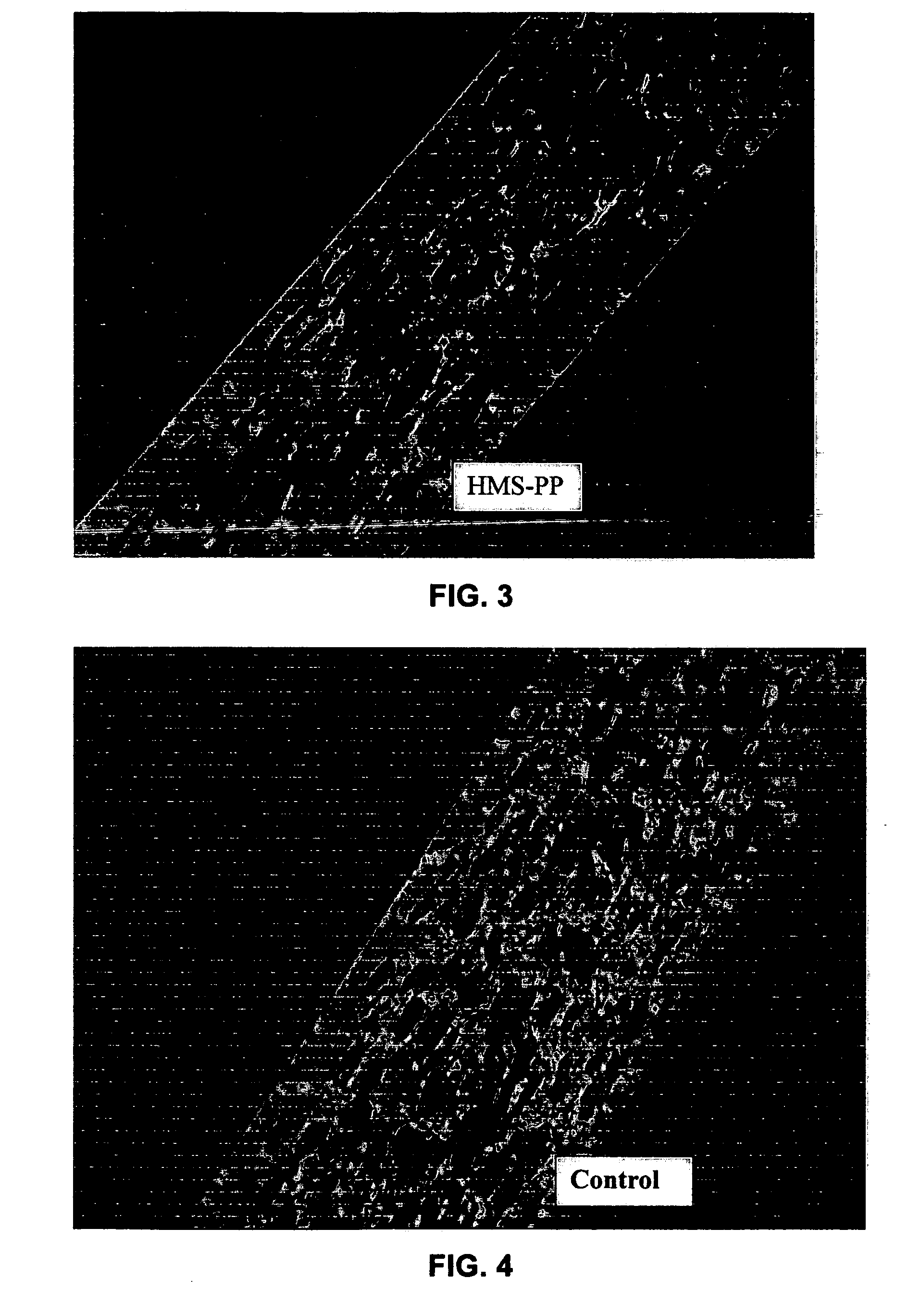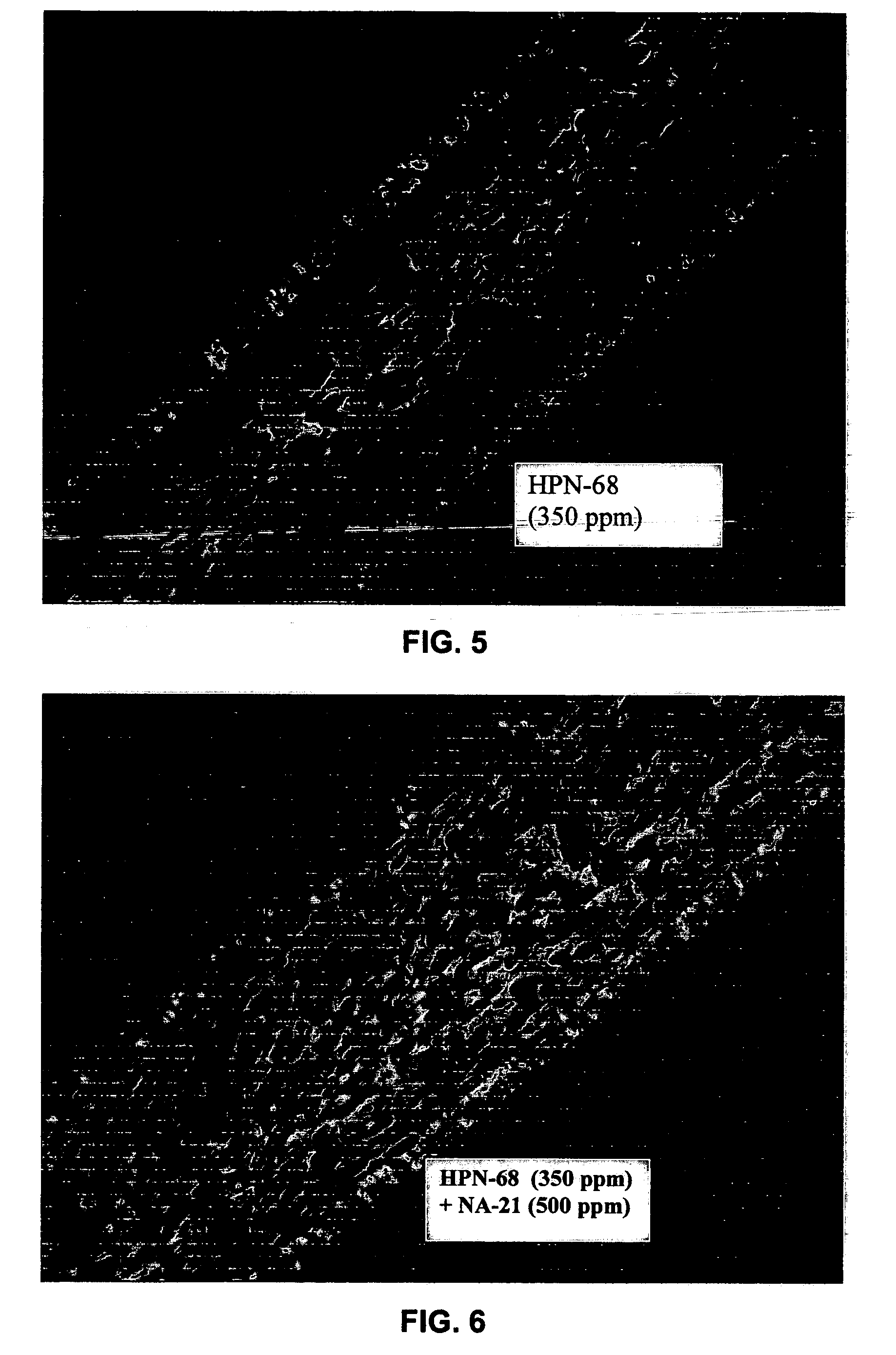Foamed polypropylene with improved cell structure
a polypropylene and cell structure technology, applied in the field of foaming polypropylene, can solve the problems of low service temperature of polystyrene articles, lack of chemical resistance, and limited use of polypropylene in foaming applications
- Summary
- Abstract
- Description
- Claims
- Application Information
AI Technical Summary
Problems solved by technology
Method used
Image
Examples
examples 1-4
[0045] Sheet samples were produced as described above to evaluate nucleated extrusion grades for improvements in foamed polypropylene. The samples were analyzed using optical microscopy comparing cell size and cell structure. An objective of the project was to determine if alicyclic norbonane sodium dicarboxylate (e.g. Hyperform HPN-68) provided benefits beyond other nucleators for foaming of polypropylene. It was hypothesized the increased rate of crystallization observed in polypropylene containing Hyperform HPN-68 would minimize cell coalescence during foaming. The polypropylene resins used in this study were 2.0 dg / min melt flow rate resins containing different crystallization nucleating agents. Example 1 contains no added crystallization nucleation agent. Example 2 contains 1800 ppm Millad 3988. Example 3 contains 1000 ppm NA-21. Example 4 contains 700 ppm HPN-68.
[0046] The foaming work was completed using a mini-coextrusion line to produce three layer A / B / A structured sheet s...
examples 5-9
[0047] Five foamed polypropylene sheet samples were prepared on a mini-coextrusion line and analyzed. As indicated in Examples 1-4, the addition of a nucleator to polypropylene does improve the cell structure of foamed sheet. This study included a high melt strength (HMS) polypropylene grade designed for foaming used in Example 5. The HMS grade is used commercially for foamed polypropylene applications and is identified as EC-6. An objective was to foam the HMS-PP on the extrusion equipment as a control to other materials being evaluated. Analysis of the HMS-PP resin using C13 NMR indicated the HMS grade is a propylene-ethylene random copolymer with 2 wt % incorporated ethylene. The molecular weight distribution of the resin is broad (MWD=25) and appears bimodal with a high Mz of 8.3 M.
[0048] The study also included a 1.8 dg / min melt flow polypropylene containing HPN-68 nucleation agent (used in Example 9, FIG. 7); a 2.0 dg / min polypropylene containing no added nucleation agent r (...
PUM
| Property | Measurement | Unit |
|---|---|---|
| Structure | aaaaa | aaaaa |
| Crystallization enthalpy | aaaaa | aaaaa |
Abstract
Description
Claims
Application Information
 Login to View More
Login to View More - R&D
- Intellectual Property
- Life Sciences
- Materials
- Tech Scout
- Unparalleled Data Quality
- Higher Quality Content
- 60% Fewer Hallucinations
Browse by: Latest US Patents, China's latest patents, Technical Efficacy Thesaurus, Application Domain, Technology Topic, Popular Technical Reports.
© 2025 PatSnap. All rights reserved.Legal|Privacy policy|Modern Slavery Act Transparency Statement|Sitemap|About US| Contact US: help@patsnap.com



